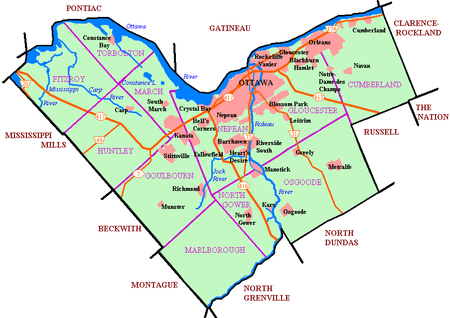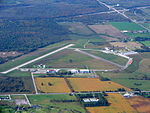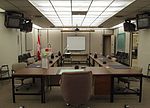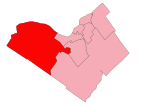Huntley Township, Ontario
Eastern Ontario geography stubsFormer municipalities now in OttawaGeographic townships in OntarioPopulated places disestablished in 1974

Huntley is a former incorporated and now geographic township in Carleton County in eastern Ontario, Canada. Huntley was located in the western part of the county, bordered to the northwest by Fitzroy Township, to the northeast by March Township, to the southwest by Ramsay Township and to the southeast by Goulbourn Township. It includes the communities of Carp, Corkery, Huntley, Manion Corners, and Westwood. According to the Canada 2021 Census, the Township had a population of 10,922.
Excerpt from the Wikipedia article Huntley Township, Ontario (License: CC BY-SA 3.0, Authors, Images).Huntley Township, Ontario
Spruce Ridge Road, Ottawa West Carleton-March (West Carleton)
Geographical coordinates (GPS) Address Nearby Places Show on map
Geographical coordinates (GPS)
| Latitude | Longitude |
|---|---|
| N 45.3 ° | E -76.05 ° |
Address
Spruce Ridge Road
Spruce Ridge Road
K0A 1L0 Ottawa, West Carleton-March (West Carleton)
Ontario, Canada
Open on Google Maps







